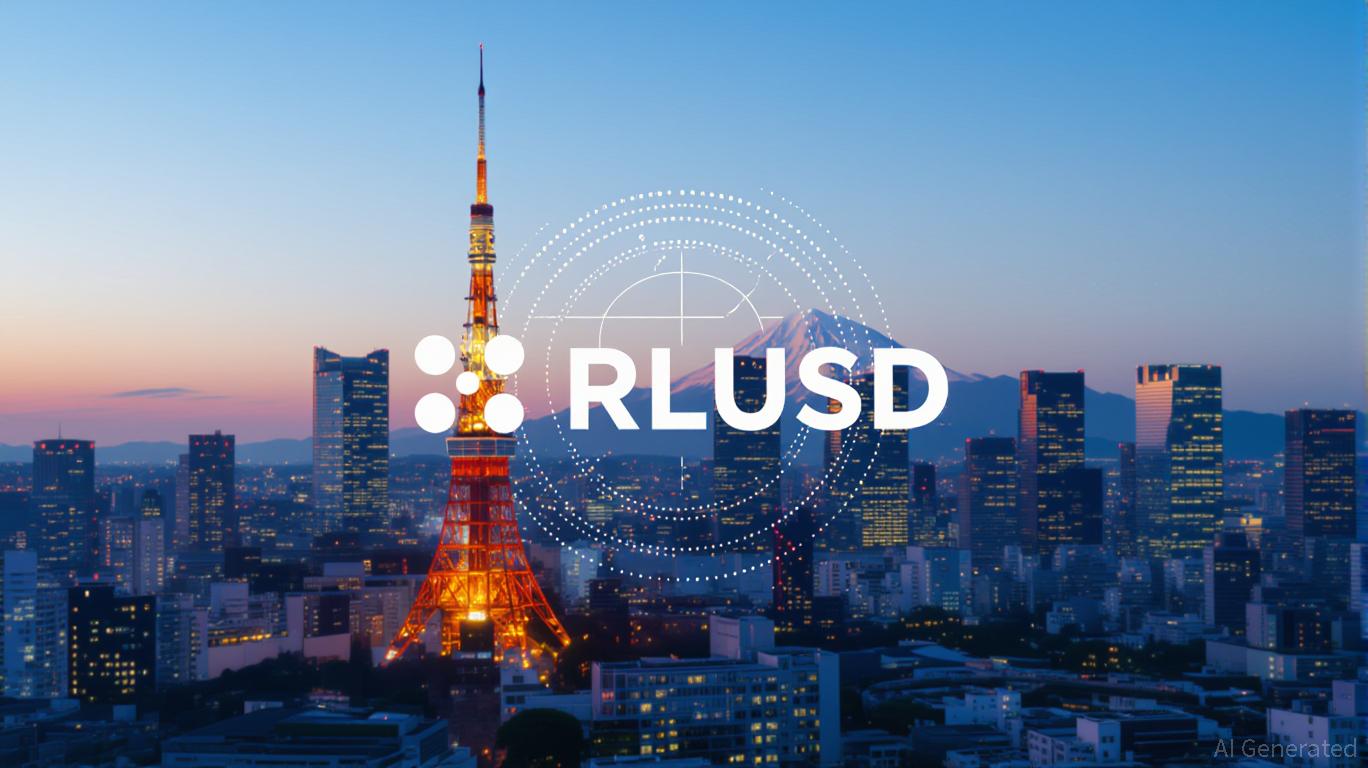
In the rapidly evolving landscape of global finance, stablecoins have emerged as a critical bridge between traditional and digital asset ecosystems. Among them, Ripple’s RLUSD stablecoin stands out as a meticulously engineered, institutional-grade solution. Paired with Japan’s groundbreaking 2025 regulatory framework, RLUSD is not just a stablecoin—it’s a strategic linchpin for institutional investors seeking exposure to Asia’s digital finance revolution.
The RLUSD Advantage: A Pillar of Transparency and Compliance
Ripple’s RLUSD is designed to address the core pain points of institutional investors: transparency, liquidity, and regulatory certainty. Unlike many stablecoins that rely on opaque reserve structures, RLUSD is fully collateralized by U.S. dollar deposits, short-term Treasuries, and cash equivalents. These reserves undergo monthly third-party audits by independent auditors, ensuring real-time visibility into its 1:1 peg to the U.S. dollar. This level of transparency is a stark contrast to the reserve controversies that have plagued other stablecoins, making RLUSD a trusted vehicle for institutional treasuries.
Moreover, RLUSD operates under a dual regulatory framework, complying with both the New York Department of Financial Services (NYDFS) and Japan’s Financial Services Agency (FSA). Ripple’s recent application for a national bank charter from the Office of the Comptroller of the Currency (OCC) further underscores its commitment to institutional-grade oversight. If approved, this charter would allow Ripple to hold reserves in a federally chartered trust bank, reducing counterparty risk and aligning with U.S. banking standards.
The stablecoin’s custodianship by Bank of New York Mellon (BNY)—a cornerstone of traditional finance—adds another layer of credibility. BNY’s role as a primary custodian ensures that RLUSD’s reserves are managed with the same rigor as those of legacy financial institutions. This partnership, combined with Ripple’s pursuit of a Federal Reserve master account, positions RLUSD as a zero-risk collateral asset in institutional portfolios.
Japan’s 2025 Regulatory Framework: A Global Blueprint for Stablecoin Innovation
Japan’s 2025 stablecoin regulations, enacted under the updated Payment Services Act (PSA), have redefined the institutional-grade stablecoin landscape. By legally recognizing stablecoins as “assets valued in currency,” Japan has created a regulatory environment that balances innovation with consumer protection. Key provisions include:
– Reserve flexibility: Up to 50% of stablecoin reserves can be allocated to low-risk assets like Japanese government bonds (JGBs), enhancing yield potential without compromising stability.
– Institutional compliance standards: Mandatory third-party audits, reserve transparency, and consumer safeguards such as “domestic asset holding orders” to protect user funds during insolvency.
– Cross-border interoperability: Japan’s regulatory clarity has made it the first major market to license a foreign-issued stablecoin (RLUSD) under its PSA framework, setting a global precedent.
These reforms have catalyzed institutional adoption, with Japan’s digital finance market projected to grow from $8.5 billion in 2024 to $42 billion by 2035. The country’s near-zero interest rate environment has further amplified demand for yield-generating stablecoin alternatives, positioning RLUSD as a prime candidate for institutional treasuries and cross-border settlements.
Strategic Synergies: SBI VC Trade and Cross-Border Institutional Flows
Ripple’s partnership with SBI VC Trade, a licensed Electronic Payment Instruments Exchange Service Provider (EPIESP) in Japan, is a game-changer. SBI’s distribution of RLUSD in early 2026 will leverage its 65 million customer base, including major Japanese banks and corporations, to onboard institutional clients seamlessly. This collaboration is not just about scale—it’s about regulatory alignment. By operating under Japan’s PSA framework, SBI VC Trade ensures that RLUSD’s adoption adheres to the country’s stringent compliance standards, reducing friction for institutional investors.
The implications are profound. Japan’s regulatory model is already influencing global stablecoin frameworks, with the U.S. passing the GENIUS Act in July 2025 to mirror Japan’s reserve-backed compliance standards. This alignment creates a dual-track stablecoin strategy that supports both foreign (e.g., RLUSD) and domestic stablecoins, aiming to attract $3.7 trillion in institutional flows by 2030. For investors, this means RLUSD is not just a regional play—it’s a bridge for cross-border institutional capital, particularly in Asia-West corridors.
Investment Thesis: High-Conviction, Long-Term Exposure
The convergence of RLUSD’s institutional-grade structure and Japan’s regulatory evolution presents a compelling investment opportunity. Here’s why:
1. Regulatory Tailwinds: Japan’s 2025 framework is a global blueprint, with ripple effects (pun intended) in the U.S. and EU. Institutions seeking compliance-ready stablecoins will increasingly favor RLUSD.
2. Yield and Liquidity: RLUSD’s reserve flexibility allows it to generate competitive yields through JGBs while maintaining its dollar peg. This is a rare combination in the stablecoin space.
3. Cross-Border Synergies: With dual-chain compatibility (Ethereum and XRP Ledger), RLUSD is optimized for cross-border settlements, tokenized assets, and institutional treasuries.
4. Market Growth: Japan’s digital finance market is on a fivefold growth trajectory by 2035. RLUSD’s early mover advantage and SBI’s distribution network position it to capture a significant share.
Conclusion: A Cornerstone of the Next-Gen Financial Infrastructure
For institutional investors, RLUSD represents more than a stablecoin—it’s a strategic asset in the next phase of global finance. Its reserve-backed structure, regulatory alignment, and institutional-grade infrastructure make it a low-risk, high-conviction play in a market poised for exponential growth. As Japan’s regulatory framework continues to shape global standards, RLUSD is uniquely positioned to benefit from the $3.7 trillion institutional flow vision by 2030.
The time to act is now. With RLUSD’s launch in Japan’s institutional ecosystem just months away, this is a rare opportunity to align with a stablecoin that’s not just compliant—it’s defining compliance.


AloJapan.com